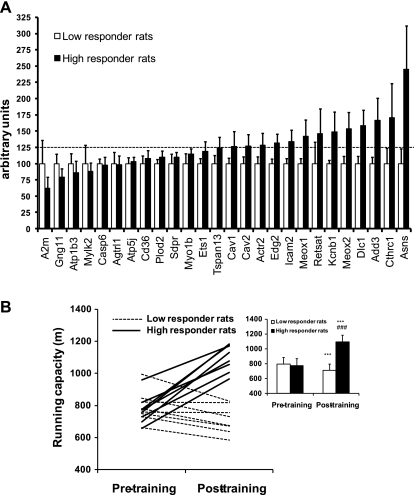Fig. 5.
Rat genetic model for high and low training response to aerobic exercise training. A: differences in basal level of muscle gene expression in 6th-generation rats that demonstrate a high or a low aerobic training response. Of 26 human “high responder genes” analyzed in soleus muscle of rats selectively bred for high and low adaptation to aerobic exercise training, 13 genes already demonstrated >25% higher expression levels in high responder rats (n = 5, black columns) compared with low responder rats (n = 6, white columns) even in this early stage of the breeding model development. As a whole, the 26 genes were expressed at a higher level in the high responder rats (P < 0.0001). Data are presented as mean arbitrary expression units ± SE. B: the change in treadmill running capacity following 8 wk of aerobic exercise training was significantly different (P < 0.001) for rats bred across 10 generations for low (n = 8) and high (n = 8) response to training. Data are presented as meters gained in maximal aerobic running capacity produced by the training mean ± SE. ***P < 0.001 compared with pretraining; ###P < 0.001 compared with low responder rats.

